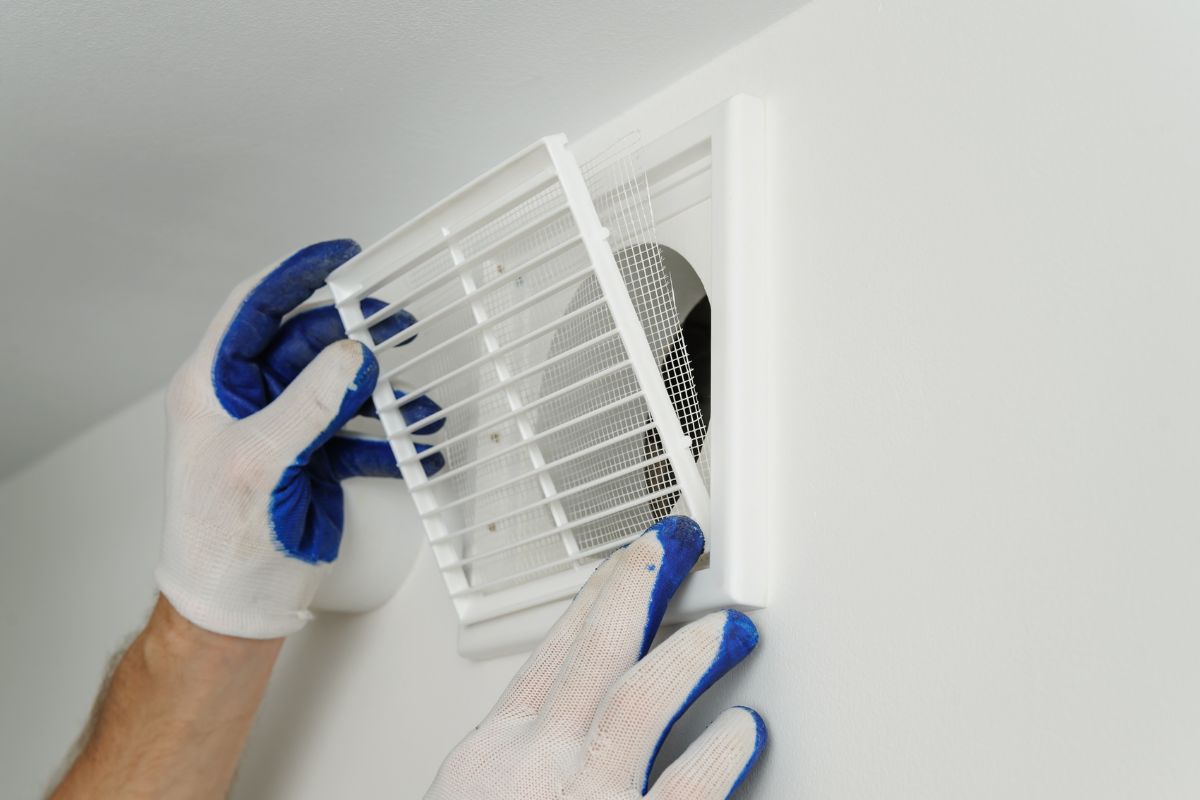Proper ventilation enables us to live comfortably and worry-free. Your home needs fresh air to come in and polluted air to go out. When your home breathes in the fresh air, you too will be breathing in the fresh air.
Air must circulate to provide good air quality to areas of your home. There are a lot of benefits that can come with proper ventilation. Proper ventilation can help your home be cleansed from smoke, indoor pollutants, cooking odors, and moisture.
In addition, poor ventilation impacts your health. Poor ventilation can cause allergies or respiratory problems. If you already have pre-existing medical conditions with previously said health impacts, then the more it is needed for you to have proper ventilation in your home.
Signs Your Home Has Poor Ventilation
After being aware of the importance of proper ventilation, it is now time to know if your home has poor or proper ventilation. If you see the signs below, then your home must have poor ventilation.
1. There Are Signs of Mould Growth
Mold growth is a sign that the level of moisture in your home is high. One thing about molds is that they do not dissipate on their own and they spread if left unattended. This is the reason why poor ventilation should be addressed as molds can also affect the health of the people living in the house.
2. Hot or Cold Spots Around The House
These hot or cold spots that appear suddenly in your home are a result of poor circulation of air. This can be addressed by having your HVAC units repaired if you have one. Contact your trusted HVAC repair companies so they can fix it for you.
3. Notice of Excess Dust
If there is excess dust in your home, it can be a result of indoor pollution which is composed of particles and contaminants. Manage your home and dust it now and then.
4. Presence of High Humidity
In relation to the first sign of poor ventilation, high humidity can contribute to the growth of mold. Moisture can help mold grow. High humidity can also mean your air conditioner is struggling. It would be best if you can contact air conditioning repair services to get it checked out.
5. Foul or Weird Smells
Foul smells can be interpreted in two ways. If it’s musty then your home could be moldy. For bitter smells, it would mean poor ventilation around your home.
Other signs of your home not having proper ventilation may include
- Accumulation of moisture such as condensation on your windows.
- Foul odors come from your trash cans, walls, and HVAC units.
- Rust starts to form on your plumbing drains.
- The tiles and floors in your home start showing signs of discoloration.
How Do I Fix Poor Ventilation In My Home?
Before we move on to the ways how you can fix poor ventilation in your home, familiarize yourself with the types of ventilation. There are three types of ventilation. Knowing the type of ventilation you have can help you in determining the best way to fix poor ventilation issues in your home.
Natural Ventilation
From the name itself, you can have an idea of what kind of ventilation this is. In natural ventilation, ventilation comes from the wind and climate. The windows around your house play a role in this kind of ventilation. Doors, chimneys, and other openings that are found in buildings and houses are considered natural ventilations.
Mechanical Ventilation
This kind of ventilation utilizes fans and air ducts. With these fans circulating fresh air, it can prevent the build-up of moisture, odor, and other pollutants which contribute to poor ventilation in your home.
There are certain benefits to using mechanical ventilation. It can provide better indoor quality than natural ventilation as it uses a system to circulate fresh air. Another benefit is that it provides more control to the user, you can easily control the system and how you want it to operate.
Hybrid
The hybrid type of ventilation can also be considered mixed-mode ventilation. It utilizes both natural ventilation and mechanical ventilation. An example of this would be exhaust fans. When the natural ventilation is not enough, exhaust fans are sometimes installed. The only reminder is that the exhaust fans should be installed where the air in the room could be exhausted outside.
Since the inspection of your home for poor ventilation has been done, it is now time to take action. If there are signs of poor ventilation, then it needs to be addressed immediately for you to be able to breathe in the fresh air.
Here are ways how you can address the poor ventilation issues in your home
-
Consider Filtering Your Indoor Air
If your home has central heating, ventilation, and air conditioning system, you can look at the following tips to help it trap viruses efficiently.
- If your HVAC is operated by a thermostat, it would be better if you can set the fan to “on” and not “auto” when you have visitors around.
- If you notice anything weird in your HVAC system, such as specific smells or differences in filtering, contact experts who conduct HVAC repair for them to tell you what is going on.
- Change the filter of your HVAC as recommended by the HVAC installation professionals or follow what the manufacturer has instructed you to do so.
- You should not only call your HVAC repair experts when there is something wrong with your HVAC system, but it is also ideal to have regular HVAC repair and maintenance.
- Make sure that your filter is properly aligned and installed.
- Use pleated filters instead of your regular furnace filters. These filters can be found in hardware stores. Make sure to follow the instruction upon installation.
Cleaning your HVAC can contribute to the filtering of the air in your home. Air duct cleaning can help your HVAC system perform better as it reduces the pressure brought about by the build-up of dust and debris.
The normal flow of air is disrupted when your HVAC filter is clogged. This is why it is essential to clean and have your HVAC checked regularly.
2. Turn On Exhaust Fans in Your Bathroom And Kitchen
Exhaust fans can help lower the concentration of particles that cause foul smells. Particles will leave your home faster when you turn on your exhaust fans than depending on natural ventilation to clear them out.
If there are visitors in your home, it would be advisable to keep your exhaust fans on. And even after your visitors leave, keep in mind to keep the exhaust fans turned on for an hour to help the particles that carry dust out of your home.
3. Open Your Windows As Ventilation
Opening your windows is the best way to naturally ventilate your home. A number lower than 60% is the ideal indoor humidity index. This is why you should also check the condition of the outdoor air before opening your windows.
Aside from opening your windows to naturally ventilate your home, it can also help with temperature control. It can help move cool air in and move warm air out.
4. Limit The Visitors You Accommodate in Your Home
Limiting the number of visitors you have can also mean lower virus particles go inside your home and particles can also leave your home faster.
Adding to that, you should gather your visitors in a large space. This is to avoid the accumulation of particles in your home due to the large volume of people in one space.
Conclusion
Poor ventilation in your home must be addressed immediately. This is because leaving these issues unattended can not only impact our everyday living but also our health. Poor ventilation in houses can be characterized by the growth of mold and occurrences of foul or weird smells.
How do you address poor ventilation issues? You can address poor ventilation by contacting HVAC repair companies to have a look at your HVAC systems. Having your HVAC systems repaired can unclog their filters and help you get fresh air into your home.
Address these issues as soon as you can and live better in a home that is filled with fresh air.
Frequently Asked Questions
- What are the types of ventilation?
The three types of ventilation are natural which uses the openings in your house, mechanical which uses fans and air ducts, and lastly, hybrid ventilation which utilizes the first two types of ventilation.
- What are the signs that your home has poor ventilation?
There are a lot of signs that could tell your home is poorly ventilated. These signs could include foul or weird smells, mold growth, and excess dust. Check your home closely for these signs.
- How do you fix poor ventilation?
There are a lot of ways you can address poor ventilation. Consider filtering your indoor air, limiting the number of visitors you have, and turning on your exhaust fans.
- How can HVAC cleaning help get fresh air inside your home?
Cleaning your HVAC can help it perform efficiently. Unclogging the filter in your HVAC and placing it properly can help you trap viruses and filter them. Getting your system checked by HVAC repair experts regularly is also a big factor in helping your HVAC system function better.












